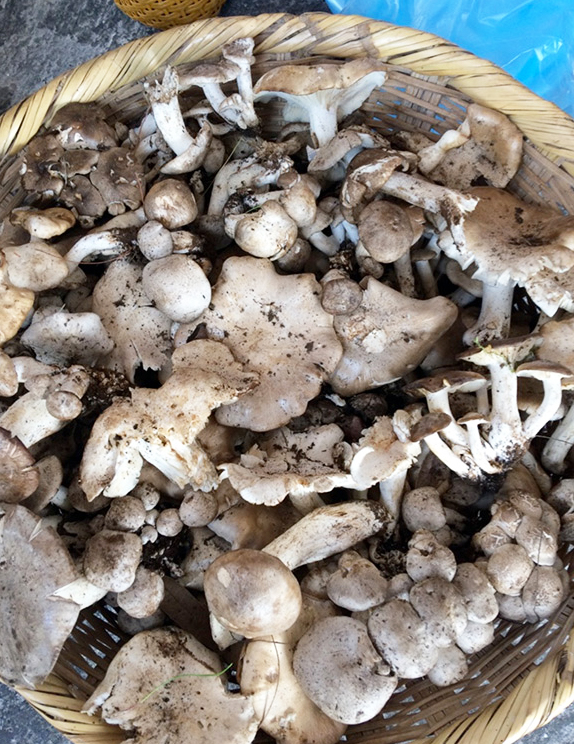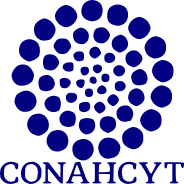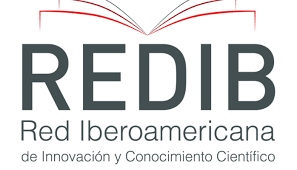Ethnomicology and sale of wild edible mushrooms at tianguis in San Antonio Acahualco, State of Mexico
DOI:
https://doi.org/10.18387/polibotanica.59.21Keywords:
collectors, stalls, prices, recipes, mushrooms, traditional ethnomycological knowledge.Abstract
The present investigation recorded traditional ethnomycological knowledge, the way of collecting, consuming and selling wild edible mushrooms in the community of San Antonio Acahualco, State of Mexico, Mexico. The cultural importance index (Cls) and relative frequency of citation (FRC) of wild edible mushrooms were calculated. In addition, the dynamics of the sale of wild edible mushrooms was recorded. The index of relative presence of species in the Tianguis (PRET) was determined. Mushrooms are collected because they are an alternative for family sustenance through consumption and sale. 31 species were identified in the Tianguis de San Antonio Acahualco. Marketing is carried out within the town and in nearby cities. The collection and sale is marked with the rainy cycle, July to October. There are two groups of people who are in charge of the collection. The most collected and consumed species are those with the highest Cls score, they are characterized because they are scarce and have a higher price in the market. People with limited resources offer mushrooms at a lower price compared to stalls that triple the price. Young collectors collect continuously and predatorily. It is concluded that the form of mushroom collection determines the conservation of the mushroom ecosystem. Likewise, ethnomycological collection rules must be established due to the ecological, nutritional and economic importance of mushrooms.
References
Alday, J. G., Martínez de Aragón, J., de-Miguel, S. y Bonet, J. A. (2017). Mushroom biomass and diversity are driven by different spatio-temporal scales along Mediterranean elevation gradients. Scientific Reports, 7(45824), 1-11. DOI: 10.1038/srep45824
Carr, M. (2008). Gender and non-timber forest products: Promoting food security and economic empowerment. [Archivo PDF]. https://dlc.dlib.indiana.edu/dlc/bitstream/handle/10535/5374/08_IFAD_Women_forest_products.pdf?sequence=1
Ceballos, L. (2008). Hongos del Arboreto y del monte Abantos [Archivo PDF]. https://www.biodiversidadvirtual.org/taxofoto/sites/default/files/cuaderno2.pdf
Cifuentes, B. J., Villegas, R. M. & Pérez-Ramírez, L. (1986). Hongos. In Lot, A., Chiang F. (Comp.) Manual de herbario (pp. 55-64). México: Consejo Nacional de la Flora de México, A. C.
Estrada Martínez, E., Guzmán, G., Cibrián Tovar, D. y Ortega Paczka, R. (2009). Contribución al conocimiento etnomicológico de los hongos comestibles silvestres de mercados regionales y comunales de la Sierra Nevada (México). Inerciencia, 34(1), 25-33.
FAO (Organización de las Naciones Unidas para la alimentación y la agricultura) (2011). Los bosques para una mejor nutrición y seguridad alimentaria. [Archivo PDF]. https://www.fao.org/3/i2011s/i2011s.pdf
Fontúrbel, F.E., Betancurt-Grisales, J. F., Vargas-Daza A. M. y Castano-Villa, G. J. (2022). Effects of habitat degradation on bird functional diversity: A field test in the Valdivian rainforest. Forest Ecology and Management, 522, 1-7. https://doi.org/10.1016/j.foreco.2022.120466
Garibay-Orijel, R., Martínez-Ramos M. y Cifuentes, J. (2009). Disponibilidad de esporas de hongos comestibles en los bosques de pino-encino de Ixtlán de Juárez, Oaxaca. Revista Mexicana de Biodiversidad, 80(2), 521-534. https://
INEGI (Instituto Nacional de Estadística y Geografía) (2020). Censos de población y vivienda. [Archivo PDF].
Joekes, S., Green, C. y Leach, M. (1996). Integrating Gender into Environmental Research and Policy [Archivo PDF]. https://opendocs.ids.ac.uk/opendocs/bitstream/handle/20.500.12413/3802/WP27.pdf?sequence=1&isAllowed=y
Medel, R., Baeza, Y. Mata, G. y Trejo, D. (2012). Ascomicetos ectomicorrízicos del Parque Nacional Cofre de Perote, Veracruz, México. Revista Mexicana de Micología, 35, 43-47
Mendoza Díaz, Ma. M. (2004). Determinación de los hongos asociados con encinos y su importancia ecológica en la porción noroeste de la sierra de Pachuca, Hidalgo [Tesis de licenciatura, Universidad Autónoma de Chapingo].
Mwangi E., Meinzen-Dick R. y Sun, Y. (2009). Does gender influence forestry management? Exploring cases from East Africa and Latin American [Archivo PDF]. https://www.hks.harvard.edu/sites/default/files/centers/cid/files/publications/fellow_graduate_student_working_papers/040-2.pdf
Patiño-Alvarado, M. C. y Barradas V. L. (1997). El manejo sustentable de los recursos naturales: una reflexión [Archivo PDF]. http://cdigital.uv.mx/handle/123456789/5382
PDM (2022-2024). Plan de Desarrollo Municipal del Honorable Ayuntamiento de Zinacantepec [Archivo PDF]. https://zinacantepec.gob.mx/pdf/Plan%20Definitivo.pdf
Pera, I., Alvarez, F. y Parlade, J. (1998). Eficacia del inoculo miceliar de 17 especies de hongos ectomicorricicos para la micorrización controlada de: Pinus pinaster, Pinus radiata y Pseudotsuga menziesii, en contenedor. Investigación agraria. Sistemas y Recursos Forestales, 7(1 y 2), 139-154.
Pinna, S., Gévry, M. F., Côté, M. y Sirois, L. (2010). Factors influencing fructification phenology of edible mushrooms in a boreal mixed forest of Eastern Canada. Forest Ecology and Management, 260(3), 294-301. https://doi.org/10.1016/j.foreco.2010.04.024
Rodríguez-Muñoz, G., Zapata-Martelo, E., Martínez-Corona, B., Vázquez-García, V., Rodríguez-Mendoza, Ma. N. y Vizcarra-Bordi, I. (2010). Mujeres y hombres: manejo de recursos del bosque. Santa Catarina del Monte, Estado de México. Secretaria de medio ambiente y recursos naturales.
Sakamoto, Y. (2018). Influences of environmental factors on fruiting body induction, development and maturation in mushroom-forming fungi. Fungal Biology Reviews, 32(4), 236-248. https://doi.org/10.1016/j.fbr.2018.02.003
Sánchez, V. J. E. y Mata, G. (2012). Hongos comestibles y medicinales en Iberoamérica. Investigación y desarrollo en un entorno multicultural. ECOSUR e INECOL.
Savoie, J. M. y Largeteau, M.L. (2011). Production of edible mushrooms in forests: trends in development of a mycosilviculture. Appl Microbiol Biotechnol, 89(4), 971–979. DOI 10.1007/s00253-010-3022-4
Signorini, M. A., Piredda, M. y Bruschi, P. (2009). Plants and traditional knowledge: An ethnobotanical investigation on Monte Ortobene (Nuoro, Sardinia). Journal of Ethnobiology and Ethnomedicine, 5(6) 1-14. doi: 10.1186/1746-4269-5-6
Stojek, K., Gillerot L. y Jaroszewicz, B. (2022). Predictors of mushroom production in the European temperate mixed deciduous forest. Forest Ecology and Management, 522, 1-13. https://doi.org/10.1016/j.foreco.2022.120451
Straatsma, G., Ayer, F. y Egli, S. (2001). Species richness, abundance, and phenology of fungal fruit bodies over 21 years in a Swiss forest plot. Mycological Research, 105(5), 515-523. https://doi.org/10.1017/S0953756201004154
Velasco Bautista, E., Zamora-Martínez, M. C., Nieto de Pascual Pola, C., Martínez-Valdez, J. I. y Montoya, A. (2010). Modelos predictivos de la producción de hongos silvestres comestibles en bosques de coníferas, Tlaxcala, México. Revista Mexicana de Ciencias Forestales, 1(1), 95-104.
Villarruel-Ordaz, J. L. y Cifuentes Blanco, J. (2007). Macromicetos de la Cuenca del Río Magdalena y zonas adyacentes, Delegación la Magdalena Contreras, México, D.F. Revista Mexicana de Micología, 25, 59-68.
Zamora Equihua. V., Gómez Peralta, M., Vázquez Marrufo, G. y Angón-Torres, M. P. (2007). Conocimiento etnomicológico de hongos silvestres comestibles registrados para la zona de Tancítaro, Michoacán. BIOLÓGICAS, (9), 41-46.

Downloads
Published
License

Polibotánica by Departamento de Botánica de la Escuela Nacional de Ciencias Biológicas del Instituto Politécnico Nacional se distribuye bajo una Licencia Creative Commons Atribución-NoComercial-CompartirIgual 4.0 Internacional.



















